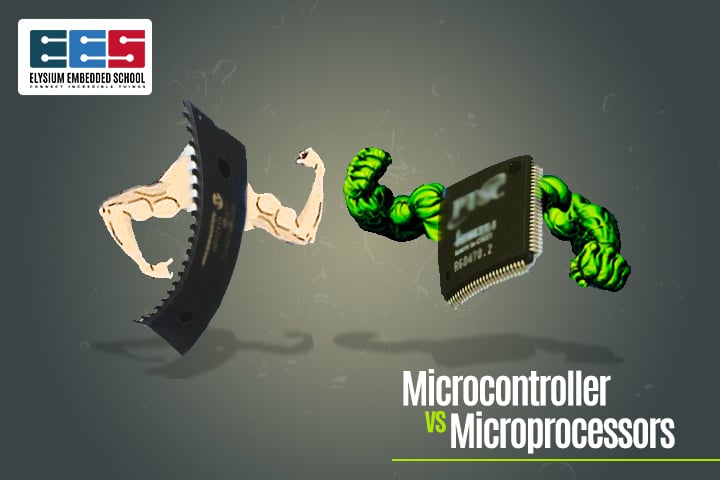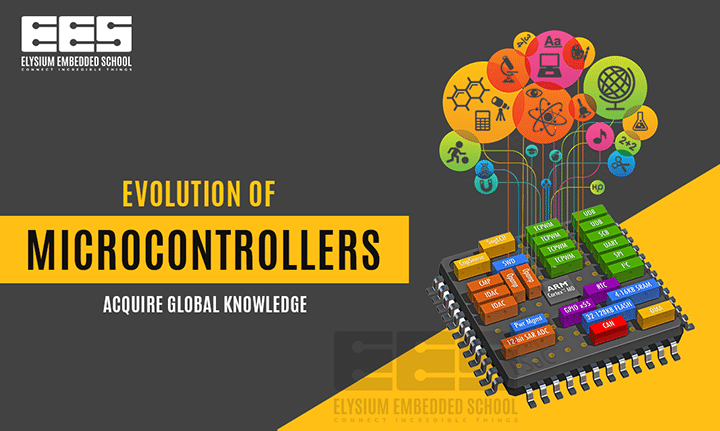
Difference Betweeen Microcontroller Vs Microprocessor
July 24, 2020
A Step Ahead To Know All Range of Microcontrollers – TCP/IP Networking Course
July 25, 2020Architecture of PIC Microcontroller trends in advanced technology that is used to help in developing most advanced electronic gadgets. Since, many electronic devices are developed using microcontrollers. Nowadays, many industries are using a PIC Microcontroller because of high-performance ability, low power consumption, etc.
PIC Microcontroller
PIC Microcontroller is the very smallest microcontroller in the world that can be designed to carry out a huge range of tasks. These microcontrollers are in electronic devices such as phones, computer, and Embedded Operating System etc. Also, the features of these microcontrollers are RAM, CCP, SSP, LCD, and ICSP, etc.
Architecture of PIC Microcontroller
To explain, the architecture of this microcontroller consists of CPU, I/O ports, interrupts, oscillator, timers/counters, A/D converter, memory organization, serial communication, and CCP module, etc.
CPU- Central Processing Unit
This CPU consists of ALU, CU, MU, and accumulator, etc. ALU (Arithmetic logic unit) is used for arithmetic operations and also to make logical decisions. Memory is used for storing the instructions. CU is used which are connected to the CPU and accumulator to storing the results.
I/O Ports
PIC microcontroller consists of five ports such as Port A, Port B, Port C, Port D and Port E.
Port A: It is a 16-bit port that can be mainly used for input and output port based on the status of the TRISA register.
Port B: This is an 8-bit port that can be used as input and output.
Port C: An 8-bit port and the input or output operation is decided by the status of the TRISC register.
Port D: An 8-bit port that acts as a slave port for connection to the ARM Microcontroller.
Port E: It is a 3-bit port which serves the additional function of the control signals to the analog into a digital converter.
Memory Organization
This microcontroller architecture consists of Random Access Memory, Read Only Memory and STACK.
Random Access Memory
Random Access Memory is an unstable memory that is used to store the data temporarily in registers. As well as, it is classified into two banks, each bank consists of a number of registers. Also, these registers are divided into two types. They are Special Function Register and General Purpose Register.
Read Only Memory
It is a stable memory that is used to store the data permanently. The ROM is also called as a program memory, where the user will write a program and save it permanently and finally the program is executed by the CPU.
STACK
The process of a stack is when an interrupt occurs, the PIC microcontroller has to execute the interrupt and existing process address. That is being executed is stored in the stack. After completing the execution of the interrupt, microcontroller calls the process with help of address, that is stored in the stack and get executes the process.
Timers/Counters
Timers are mainly used for generating accuracy actions. Although, it has four-timer/counters where the one 8-bit timer and the remaining timers have the choice to select 8 or 16-bit mode.
Oscillators
Generally, oscillators are used to generating timing. It consists of an external oscillator such as RC and crystal oscillators. In RC oscillator, the value of capacitor and resistor that is used to determine the clock frequency. The range of clock frequency is 30 KHz to 4MHz.
Interrupts
It consists of 20 internal interrupts and three external interrupts, which is associated with different peripherals such as ADC, USART, and Timers etc.
CCP module
Generally, CCP stands for Capture/ Compare/ PWM. CCP module works in three modes such as Capture mode, Compare mode and PWM mode.
Application of PIC Microcontroller
PIC microcontroller can be used in different applications such as audio accessories, peripherals, and video games, etc.
Street Light that Glows on Detecting Vehicle Movement
This project is used to detect the vehicle movement on highways to switch on a block of street lights and also switch off the trailing lights to conserve energy.
The power supply gives the power to the circuit by rectifying, stepping down, filtering and regulating AC supply. The IR sensors are placed on the road to detect the movement of the vehicle and send the commands to the PIC microcontroller to switch ON or OFF the LEDs.
PIC Microcontroller Advantages
- Interfacing of an analog device is easy without extra circuitry.
- When compared to other microcontrollers, power consumption is very low, and programming is very easy.
- It is consistent and faulty of PIC percentage is very low. Using RISC architecture the performance is high-speed.



